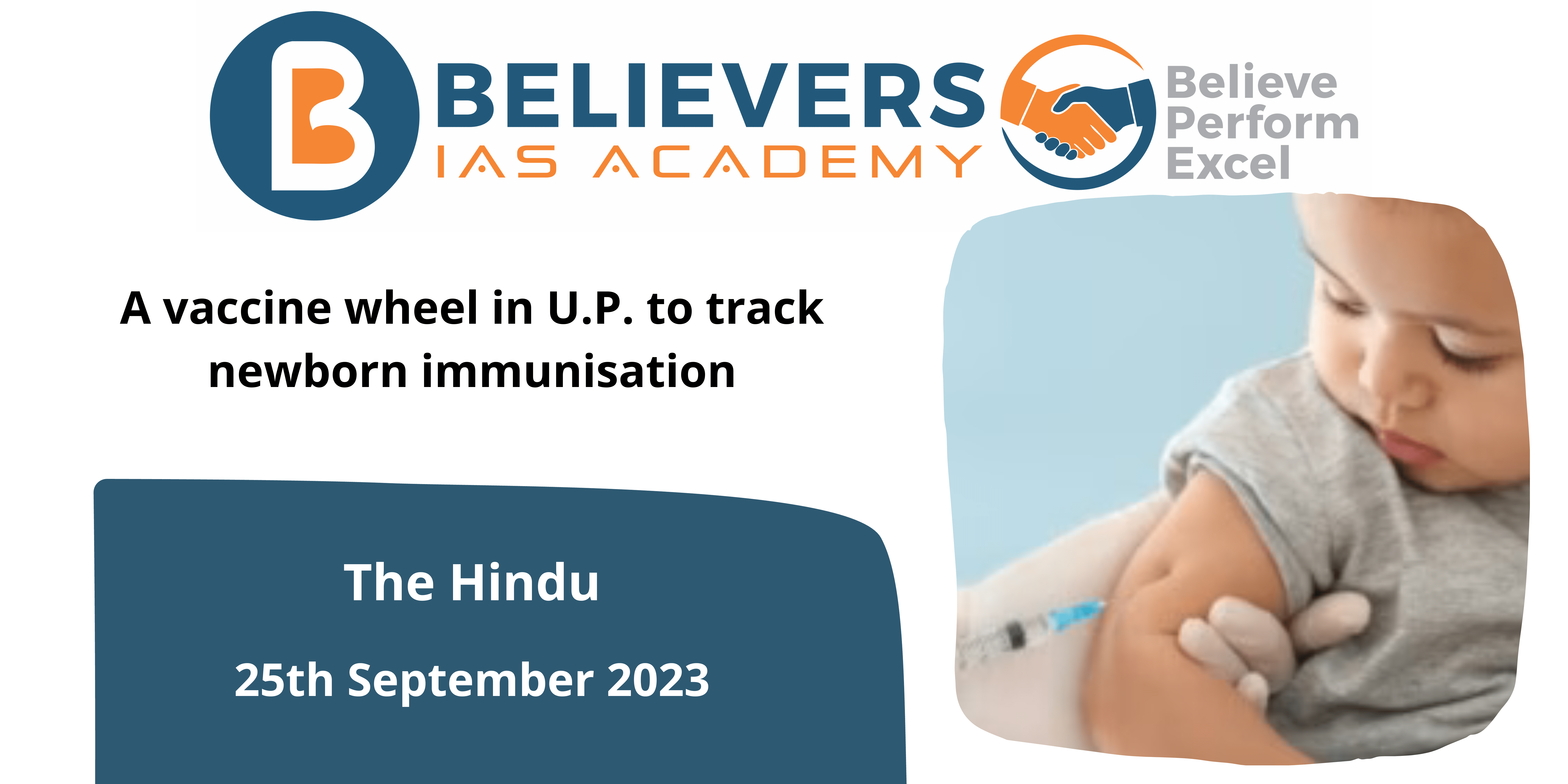A vaccine wheel in U.P. to track newborn immunisation
Context
The Clinton Foundation designed and provided funding for the immunization wheel, also known as a teekakaran chakra in Hindi, as part of the Clinton Health Access Initiative (CHAI). It consists of two discs, one larger than the other, stacked one on top of the other, and then riveted together. The larger one displays a calendar with days and months, while the smaller one provides information about the immunizations and arrows.
What is the Mission Indradhanush?
Mission Indradhanush is a significant health mission launched by the Government of India on 25 December 2014, under the leadership of Union Health Minister J. P. Nadda. This mission’s main objective is to increase India’s immunization rates, with a target of 90% nationwide complete immunization by the year 2022. The following are some important facts concerning Mission Indradhanush:
- Launch Date: On December 25, 2014, Mission Indradhanush was formally launched.
- Immunization Coverage: Increasing India’s immunization coverage is the mission’s main goal. This entails making sure that a bigger proportion of the populace, in particular children and expectant mothers, receives immunizations promptly to protect them against diseases that can be prevented by vaccination.
- Diseases Targeted: Vaccination is provided against several vaccine-preventable diseases, including:
- Diphtheria
- Whooping Cough (Pertussis)
- Tetanus
- Polio
- Measles
- Severe forms of Childhood Tuberculosis
- Hepatitis B
- Meningitis and pneumonia caused by Haemophilus influenza type B
- Geographic Focus: Some vaccinations are distributed nationally to all eligible people, while others are selectively targeted depending on regional disease frequency and risk. For instance, vaccines against Japanese encephalitis and rotavirus diarrhoea are available in specific states and districts where these illnesses pose a serious threat.
- Sustainability: In addition to boosting vaccination rates, Mission Indradhanush seeks to maintain high vaccination rates to provide ongoing protection from diseases that can be prevented by vaccination.
What is the Immunization Wheel?
The Clinton Foundation created and funded the Immunization Wheel through the Clinton Health Access Initiative (CHAI), also known as the teekakaran chakra in Hindi. It is intended to help healthcare professionals, especially Accredited Social Health Activists (ASHA) in India, to precisely and effectively calculate and schedule childhood vaccines.
What are the features?
- Design: The Immunization Wheel has two circular discs—one smaller and one larger—that are joined by a rivet in the middle. It is commonly made of plastic-laminated cardboard.
- Components:
- Smaller Disc: This disc includes crucial vaccine details, such as vaccine names, and also has arrows to assist you in identifying which vaccinations are approaching.
- The larger disc can be used as a calendar and includes days and months, enabling medical professionals to plan vaccination schedules precisely.
- Functionality:
- Birth date matching: ASHA employees and other healthcare professionals record a child’s birth in their records or diaries.
- Calculating Immunization Due Dates: They compare the child’s birthdate to the Immunization Wheel’s due dates for the first round of immunizations. These dates are often associated with vaccinations given to children throughout their first year of life, such as shots at 1.5, 2.5, 3.5, and 9 months.
- Automatic Calculation: Without the need for human calculations, the Immunization Wheel automates the process of determining the dates for successive vaccines.
- Visual Indication: The wheel also shows whether an injection (syringe vector) or an oral dose (drop vector) of the vaccine is to be given. This aids medical personnel in ensuring they administer the correct value.
What is the Efficiency and Impact of the programme?
- The introduction of the immunization wheel has significantly improved the efficiency of ASHA workers in Uttar Pradesh.
- Even ASHA workers with limited education (Class 8 or 10) have been able to increase their work speed with the wheel.
- Within a year of its implementation, ASHA workers have achieved impressive targets of 95% vaccine coverage in the first year of a child’s life.
How is the Training and Distribution of the vaccines done?
- Training for the use of the immunization wheel is provided by the Clinton Foundation at the district level to block-level health officials.
- These officials, in turn, train ASHA workers in its usage.
- The tool has been distributed to ASHA workers across 75 districts in Uttar Pradesh, with 1,83,600 wheels distributed as of August 2022.
How is it going to Contribute to Public Health Goals?
- The immunization wheel has played a crucial role in improving vaccination coverage in Uttar Pradesh.
- It ensures that children receive their vaccinations on time, contributing to the state’s public health goals.
Conclusion
In conclusion, the immunization wheel has shown to be a highly efficient tool for streamlining the immunization process for ASHA staff, boosting their efficiency, and eventually improving vaccine coverage rates for kids and expectant women in Uttar Pradesh. It is an invaluable tool in the promotion of public health and immunization campaigns due to its visual advice and thorough information.




